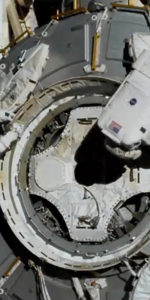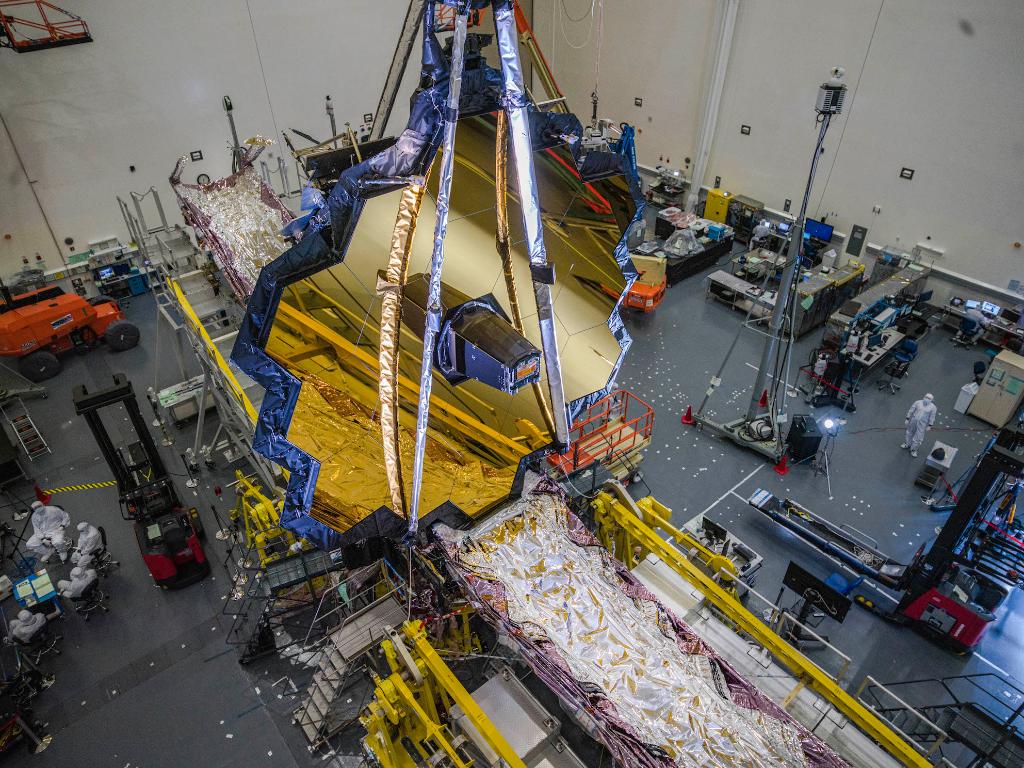
The James Webb Space Telescope (JWST) is the much-anticipated new space observatory that is regarded as being the follow-on successor to the Hubble Space Telescope (HST). The launch of JWST has been delayed multiple times, however, due to technical and other challenges, and, most recently, COVID-19. But now, NASA has just announced a new launch date for its premiere space observatory: Oct. 31, 2021. The previous launch date had been sometime in March 2021.
JWST is complete in terms of construction, but still has to go through extensive testing before launch.
“The perseverance and innovation of the entire Webb Telescope team has enabled us to work through challenging situations we could not have foreseen on our path to launch this unprecedented mission,” said Thomas Zurbuchen, associate administrator for NASA’s Science Mission Directorate at the agency’s headquarters in Washington. “Webb is the world’s most complex space observatory, and our top science priority, and we’ve worked hard to keep progress moving during the pandemic. The team continues to be focused on reaching milestones and arriving at the technical solutions that will see us through to this new launch date next year.”
The new launch date is based on a completed schedule risk assessment of the remaining integration and test activities prior to launch.
The COVID-19 pandemic had slowed down the testing process, although much progress had already been made prior to the start of the pandemic. Testing now continues at Northrop Grumman in Redondo Beach, California.
The decision to move the launch date again was made after considering the impacts of augmented safety precautions, reduced on-site personnel, disruption to shift work and other technical challenges. The assessment of the project’s progress was previously scheduled for last April, but then was delayed due to the pandemic. It was completed this past week.
Other good news is that JWST will be able to remain within its $8.8 billion development cost cap by using existing program funding.
“Based on current projections, the program expects to complete the remaining work within the new schedule without requiring additional funds,” said Gregory Robinson, NASA Webb program director at the agency’s headquarters. “Although efficiency has been affected and there are challenges ahead, we have retired significant risk through the achievements and good schedule performance over the past year. After resuming full operations to prepare for upcoming final observatory system-level environmental testing this summer, major progress continues towards preparing this highly complex observatory for launch.”
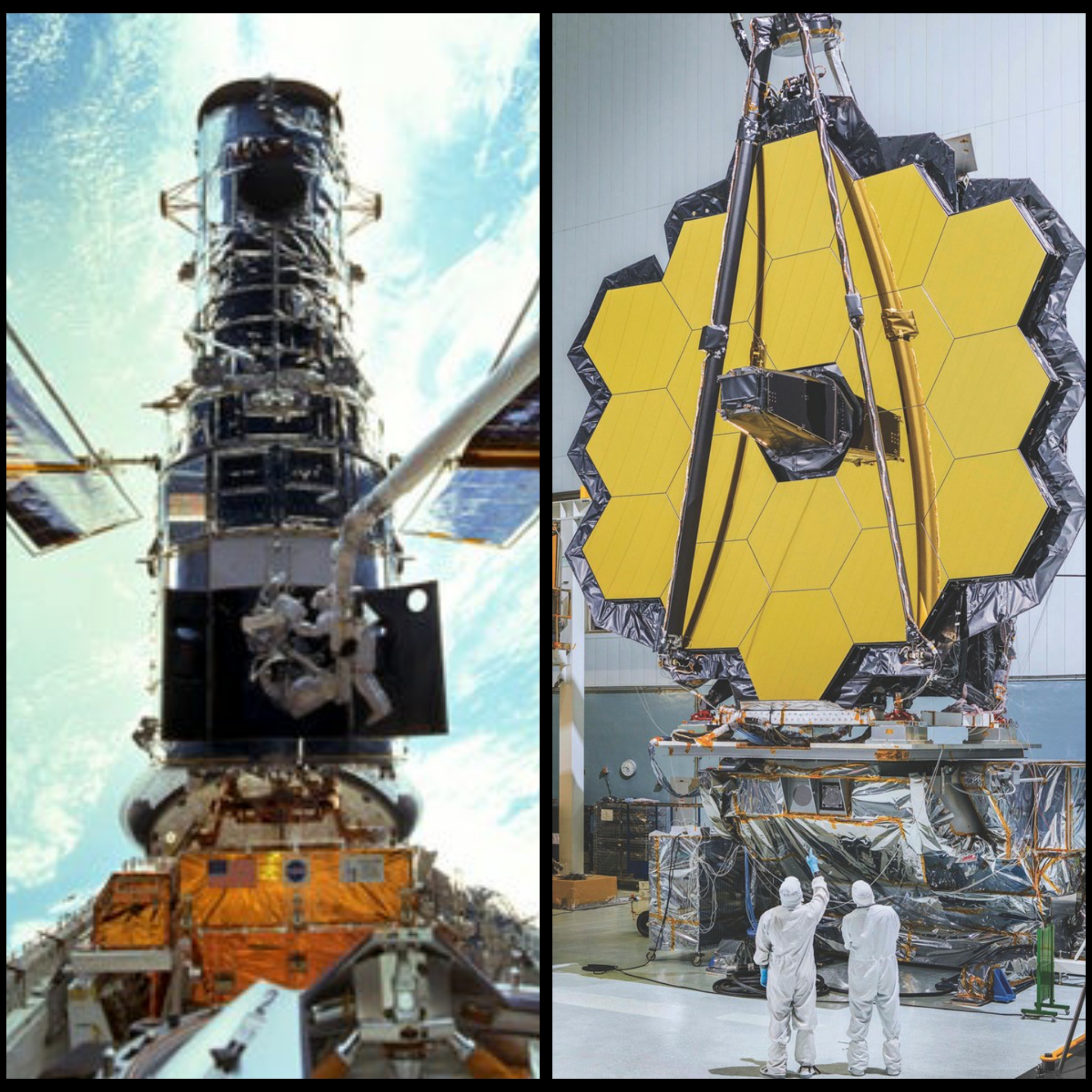
JWST will be shipped – folded “origami-style” – to its launch site in Kourou, French Guiana, but before that happens, it will need to complete a final series of extremely difficult environmental tests.
Another test just completed was electrical, which comes before acoustics and vibration environmental tests in August. The electrical testing was followed by ground system testing of the fully integrated observatory.
JWST is a very complex space telescope, and it is essential that every component of it is working properly before launch. This kind of rigorous review may have also played a part in previous delays of the launch of JWST, but it is much better to have the mission delayed a bit than to have it go into space with faulty hardware or software.
JWST is also larger than Hubble; with its 69.5 ft x 46.5 ft instruments-protecting sunshield deployed, it will be the size of a Boeing 737 airplane. By comparison, Hubble is about the size of a large tractor-trailer truck or bus.
So just what will JWST do?
Overall, as described by NASA, the mission will “answer fundamental questions about our cosmic origins outlined in the National Academy of Sciences 2000 Decadal Survey.”
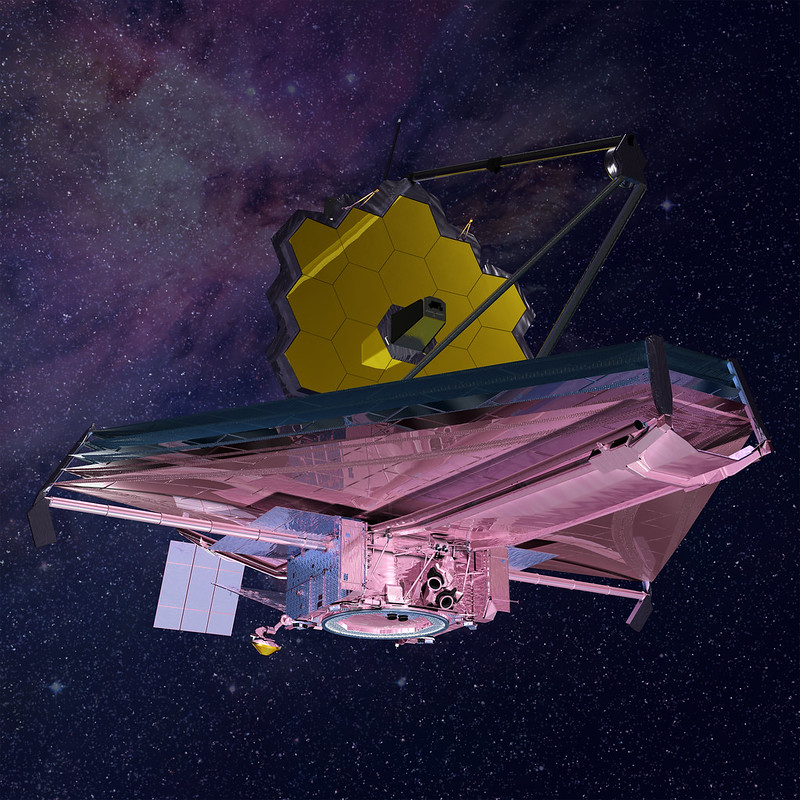
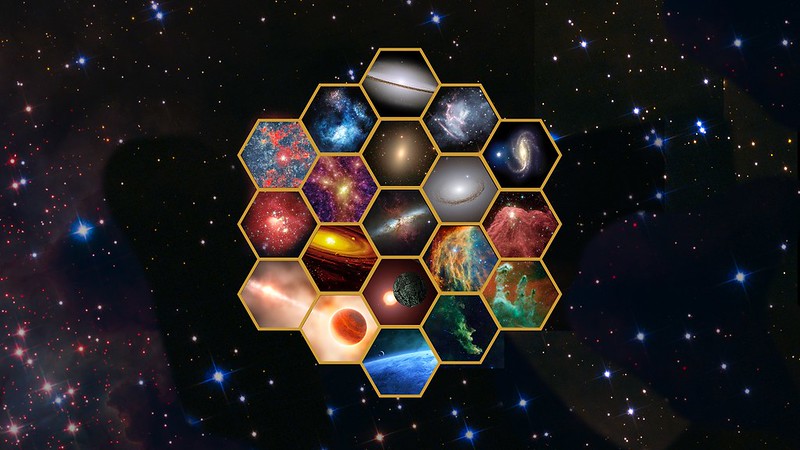
“Webb is designed to build upon the incredible legacies of the Hubble and Spitzer space telescopes, by observing the infrared universe and exploring every phase of cosmic history,” said Eric Smith, NASA Webb’s program scientist at the agency’s headquarters. “The observatory will detect light from the first generation of galaxies that formed in the early universe after the big bang and study the atmospheres of nearby exoplanets for possible signs of habitability.”
JWST will complement and extend the discoveries of Hubble, with longer wavelength coverage and greatly improved sensitivity. JWST will be able to look further back, closer to the beginning of time and hunt for so-far unobserved formation of the first galaxies. It will also study exoplanets and look inside dust clouds where stars and planetary systems are forming today.
“What we’re trying to do is look at the birthplaces of massive stars,” explained Erick Young, principal investigator of a program that will use Webb to study this phenomenon. “Determining the actual structure of the clouds is very important in trying to understand the star formation process.”
“These forces destroy the birth environment that the star was created in,” explained infrared-dark-cloud expert Cara Battersby, an assistant professor of physics at the University of Connecticut. “The environment you’re looking at after it formed is totally different from the environment that was conducive to its forming in the first place. And since we know that infrared-dark clouds are places where massive stars can form, if we look at their structure before stars have formed or have just started to form, we can study what environment is needed to form those massive stars.”
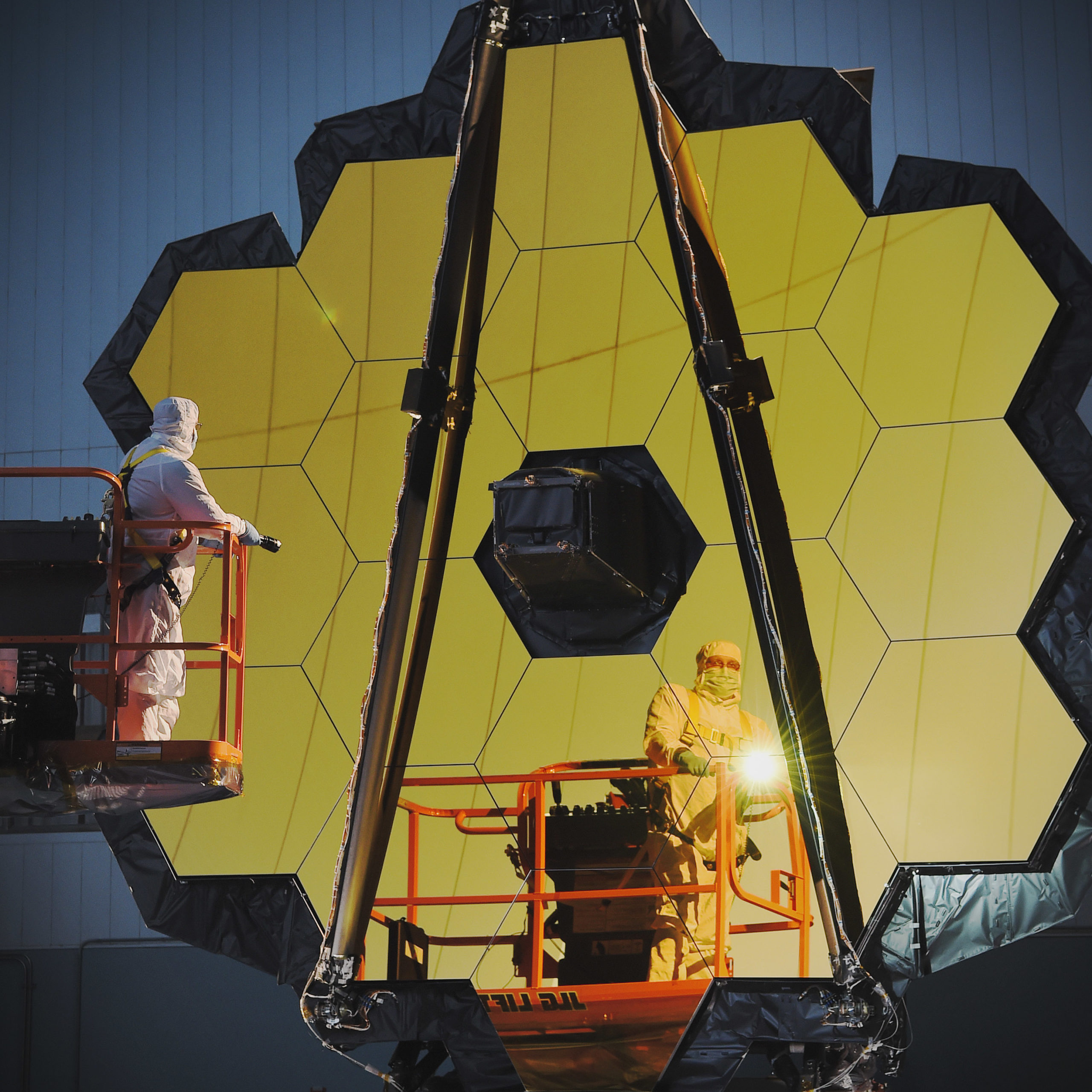
Primary mission goals of JWST include:
- Search for the first galaxies or luminous objects formed after the Big Bang
- Determine how galaxies evolved from their formation until now
- Observe the formation of stars from the first stages to the formation of planetary systems
- Measure the physical and chemical properties of planetary systems, including our own Solar System, and investigate the potential for life in those systems
One of the most exciting things that JWST will do is study the atmospheres of exoplanets orbiting distant stars, in particular worlds that are potentially habitable, and search for possible biosignatures – chemical evidence of life.
“The atmospheres are harder to detect but the reward is higher. It would be very exciting to make the first detection of an atmosphere on an Earth-sized planet,” said David Lafrenière of the University of Montreal.
It has been a long wait, and there’s still a ways to go yet, but the JWST mission will be an exciting one, helping to once again revolutionize our knowledge about the universe, adding to the legacy of space observatories that began with Hubble.
JWST will be launched on an Ariane-5 rocket from Arianespace’s ELA-3 launch complex at the European Spaceport in Kourou, French Guiana.
You can find more information about JWST on the mission website.
.
.
FOLLOW AmericaSpace on Facebook and Twitter!
.
.





